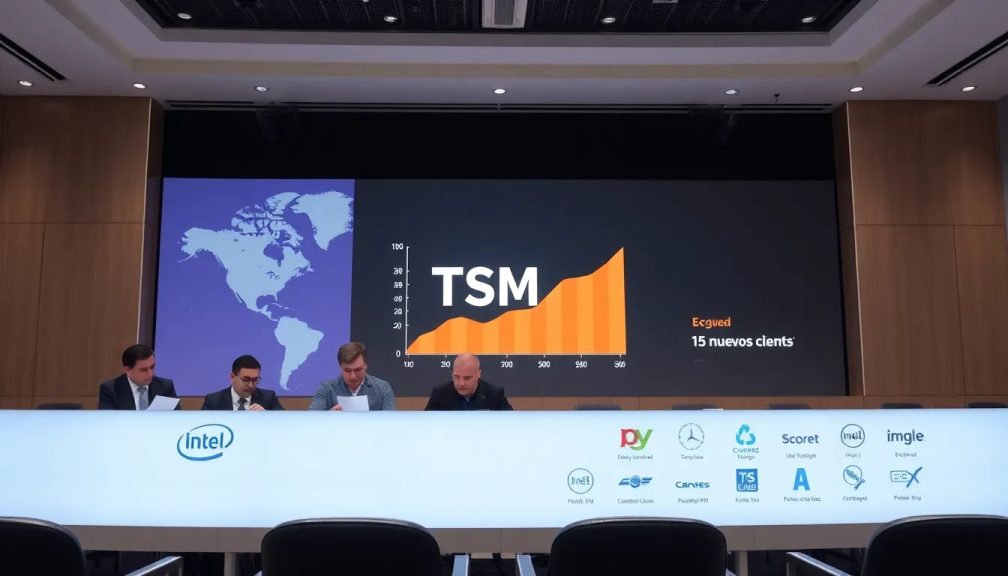Intel faces defeat as TSMC secures 15 major clients for N2

In the fiercely competitive landscape of semiconductor manufacturing, TSMC (Taiwan Semiconductor Manufacturing Company) has just revealed a significant advantage with its new 2-nanometer (N2) technology. This breakthrough is not just about keeping pace with industry giants like Intel; it's about redefining the future of high-performance computing (HPC) and artificial intelligence (AI). As major players line up to secure their share, the implications for the industry are profound.
With TSMC securing 15 major clients for its N2 technology, including 10 from the HPC sector, the stakes are high. This shift signifies a pivotal moment where advanced processes are no longer optional but essential for companies looking to remain competitive. The momentum generated by TSMC's N2 technology could very well leave Intel, particularly its Intel Foundry Services (IFS), struggling to catch up.
TSMC's N2 technology: a game changer for the semiconductor industry
TSMC's leap into the 2nm territory represents a significant technological advancement. The demand for smaller, more efficient chips is driven by the increasing complexity of applications, especially in HPC and AI. As companies seek to enhance performance while minimizing power consumption, the N2 technology emerges as a beacon of hope.
- Increased density of transistors allows for more complex computations.
- Enhanced energy efficiency leads to lower operational costs.
- It supports the development of cutting-edge technologies, including machine learning and big data analytics.
This new technology goes beyond mere performance improvements; it redefines what's possible in the realm of computing. Ahmad Khan, the president of KLA's Semiconductor Products and Solutions division, emphasized the significance of this shift, stating that "the N2 node from TSMC has about fifteen clients designing, of which around ten are in HPC." This statement underscores the urgency and necessity driving the industry towards advanced manufacturing techniques.
Apple and TSMC: a partnership that shapes the market
Apple's collaboration with TSMC is critical to understanding the broader implications of the N2 technology. The tech giant has secured a staggering 50% of TSMC's N2 production capacity for 2026. This strategic move enables Apple to maintain its competitive edge in the smartphone and computing markets.
The upcoming A20 and M6 chips are expected to leverage the N2 technology, promising a performance boost of 15% to 18% or a reduction in power consumption by up to 35% while maintaining the same performance levels. Such advancements solidify Apple's position as the primary customer for TSMC, even as its revenue share may slightly decline.
The competitive landscape: who are TSMC's key clients?
As TSMC prepares for the N2 rollout, its list of anticipated clients for 2026 reveals a competitive landscape:
| Company | Projected Revenue Share |
|---|---|
| Apple | 22% - 25% |
| Broadcom | 11% - 15% |
| NVIDIA | 11% |
| MediaTek | 9% - 10% |
| Qualcomm | 8% |
| AMD | 7% |
| Intel | 7% |
This breakdown illustrates not only the competitive dynamics but also highlights Broadcom's potential to surpass NVIDIA in market share, a trend worth watching closely.
The growing demand for N2: a critical resource for the future
The demand for TSMC's N2 technology is overwhelming, with the initial years of production already fully booked. This phenomenon raises questions about resource allocation among various semiconductor manufacturers. As HPC and AI companies secure their spots at the front of the line, smaller firms may struggle to gain access to this critical technology.
For many, the race to secure N2 production capacity will be a matter of survival:
- Companies like AMD and Intel may find themselves at a disadvantage.
- Those with fewer resources face challenges in competing for limited wafer allocations.
- Innovations in partnership and investment could be essential for smaller players to stay relevant.
Intel's struggle: a stark contrast to TSMC's success
Despite having advanced nodes, Intel faces significant challenges in the current market landscape. With limited clients for its 18A node and NVIDIA assessing its 14A offerings, the company's investment in extreme ultraviolet (EUV) technology may be at risk of failing to yield expected returns.
While TSMC's N2 technology is already booked solid until 2029, Intel's IFS is struggling to attract clients. This situation highlights the critical importance of both production capabilities and technological advancements in the semiconductor industry.
As the competition heats up, it becomes increasingly clear that Intel's path forward may require a reevaluation of its strategies and investments. The ongoing developments raise the question: will Intel be able to pivot in time to remain a significant player in an industry dominated by TSMC's innovations?
For further insights into this evolving landscape, you may want to check out the following related video that discusses the competitive dynamics between Intel and TSMC:




Leave a Reply